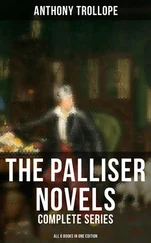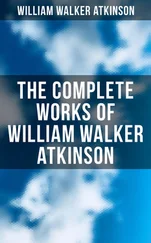These Electrons are the tiny particles that pour forth from the pole in the Crookes' Tube, and constitute what are known as "X Rays," "Cathode Rays," "Becquerel Rays," etc. They also are the particles that are thrown off and emitted by Radium, and similar substances. They exist in the Atom, as explained, but also are found "free" and independent, and in the last condition or state are thrown off in the aforesaid "Rays," and by Radium, etc. So far the Corpuscles are known only as charged with Electricity, and the Electron only as a tiny charge of Electricity with which the Corpuscle is charged. But Science dreams of Corpuscles of Substance other than Electrons, in which case the old Occult teachings of "light dust" and "heat dust," etc., will be verified.
The Electron contains a powerful charge of Electricity, as much in fact as an Atom, 1,000 to 150,000 times its size will carry. But Science is wondering how these highly charged particles manage to hold together in the Atom, so rigidly coherent as to appear indestructible. We think that we may get a hint at the matter a little later on in this book.
Science, or at least some scientists, are wondering whether the "whirl" or vibration of the Corpuscle might not produce that which we call "Electricity," and whether, when this motion is intensified, waves of Electricity will not be emitted. The writer fully agrees with this idea, and finds that it fits closely his own theories regarding Substance and Motion. But the reader is cautioned against falling into the error of many recent popular writers on the subject, some of whom have used terms calculated to convey the idea that the Corpuscle (Electron) is Electricity itself , rather than tiny particles of Substance called Corpuscles, charged with the unitary charge of Electricity, and therefore called "Electrons." But for that matter, Electricity is only known to us as associated with some form of Substance, and not as "a thing-in-itself." We shall see the reason for this as we proceed with this book. These Corpuscles are destined to play a most important part in the theories of Science from now on. They already have overturned several very carefully and laboriously erected theoretical structures—and many more will follow, among the many important ones evidently doomed to the dust-heap being the "vortex-ring" atomic theory, and other theories built upon the Etheric origin of Matter, and other theories concerning the Ether, even to the extent of breaking down the theory of The Ether itself, which theory had almost come to be considered a Law.
We shall further consider the Corpuscles, and their qualities, characteristics, etc., in the next chapter, for they have an important bearing upon the theories advanced in the course of the study of this book.
CHAPTER VI
SUBSTANCE AND BEYOND
Table of Content
SCIENCE has ascribed to Substance certain characteristic qualities which it calls "Properties." It divides these properties into two classes, viz. : (1) Molecular Properties (sometimes called Physical Properties); and (2) Atomic Properties (sometimes called Chemical Properties).
Molecular Properties are those which may be manifested by Substance without disturbing the Molecules, and consequently without affecting the "kind" of Substance.
Atomic Properties are those which concern the Atoms when free from Molecular combination, and which consequently cannot be manifested without changing the "kind" of Substance.
Science, before long, is likely to add a third class of Properties, namely, " Corpuscular Properties ," relating to the Corpuscles or particles of Radiant Matter, but, so far, it has not had the opportunity to sufficiently observe these qualities, except in a general way.
There are certain General Properties that seem possessed by both Mass, Molecules, and Atoms—and probably by Corpuscles.
These General Properties are as follows:
Shape : That property whereby Substance "takes up room." This property manifests in three directions, called Dimensions of Space, namely, Length, Breadth, and Thickness.
Weight : That property whereby Substance responds to Gravity. Weight is simply the measure of the attraction.
Impenetrability : That property whereby two bodies of Substance are prevented from occupying the same space at the same time. A nail driven into a piece of wood, simply pushes aside the molecules, and occupies the Space between them. Substance is never actually "invaded" or its actual territory occupied by other Substance.
Indestructibility : That property whereby Substance is prevented from being destroyed or annihilated. Although the forms of Substance may be changed, or transformed into other forms, still, Substance in itself is not destroyed, and cannot be under the existing Laws of the Universe.
Mobility : That property whereby Substance responds to imparted Motion. We shall notice this property in our consideration of Motion. In addition to the Motion of the Mass, and the movements of Molecules and Atoms in response to its Attraction, there is another form of Motion constantly going on, without reference to the Attraction or impressed Motion of the Mass. The Molecules of all bodies are always in a state of rapid Motion, called Vibration. In solids this vibration is short, being restrained by the close cohesive position of the Molecules. But in Liquids, the Molecules being further separated, the vibration is far more rapid, and they move around and slide over each other with comparatively little resistance. In gases and vapors the Molecules have a splendid field for Motion, and consequently vibrate in wide fields and orbits, and dash around with the greatest velocity. The Atoms also are believed to vibrate rapidly, in accordance with their own laws of vibration. And the Corpuscles are believed to far excel the last two mentioned particles in intensity, rapidity and complexity of their vibrations, as we shall see a little later on in the book. All Substance is in constant Motion and Vibration. There is no Rest in Substance.
Inertia : That property whereby Substance may not move unless in response to imparted Motion; nor terminate its Motion, when it is once imparted, except in response to some other manifestation of impressed Force. Science holds that this "impressed Force" or "imparted Motion" must come from without, but the writer holds that Force may also be "expressed" from "within," as may be seen by reference to subsequent chapters of this book.
Attraction : That property whereby particles or bodies of Substance (1) draw other particles or bodies toward themselves; or (2) move toward other particles or bodies; or (3) are mutually drawn together. This property manifests in four forms, generally referred to as separate and distinct from each other, but which the writer believes to be but forms of the same Attractive Power, and which he believes to be a Mental Process, at the last analysis (a revolutionary claim, which will be supported by argument in later chapters of the book). These three forms of Attraction are known as (1) Gravitation; (2) Cohesion; (3) Adhesion; and (4) Chemical Affinity, or Chemism. We are invited to consider them briefly, at this point, further investigation being reserved for our chapters on Motion, and Dynamic Thought.
Gravitation : This term is usually applied to the attraction between Masses of Substance, such as the Sun, the Earth, and Masses of Substance on or about the Earth's surface. However, Newton, who discovered the facts of Gravitation, states the Law, as: " Every particle of matter in the Universe, attracts every other particle ," etc.
Cohesion : This term is used to indicate the attraction between Molecules, by which they are combined into Masses or Bodies. Cohesion causes the Molecules to unite and cling together, thus forming the Mass.
Читать дальше












